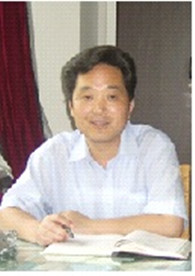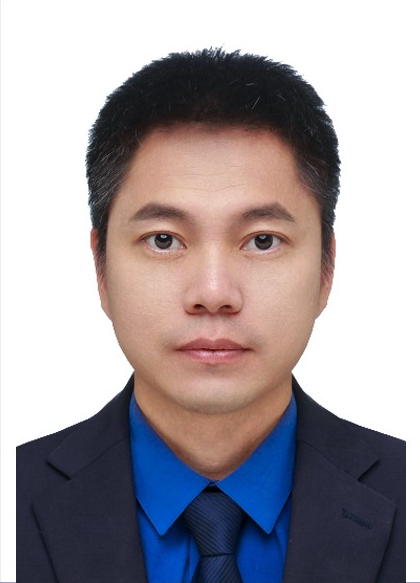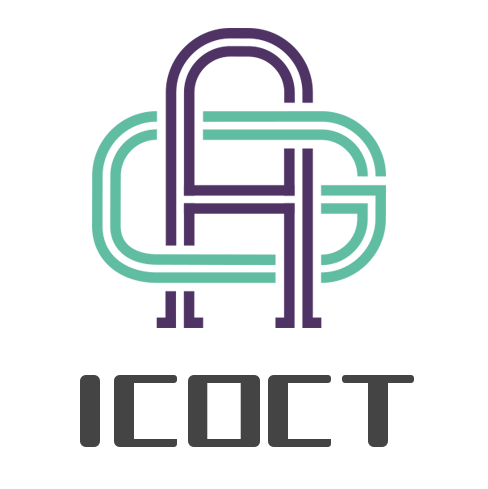Keynote Speakers

Prof. Xizheng Ke, Xi'an University of Technology, China
柯熙政,教授,西安理工大学
Xizheng Ke, Ph.D., Second-level Professor, deputy director of Shaanxi Provincial Key Laboratory of Intelligent Cooperative Network Military-civilian Joint Construction. Famous Teaching Teacher of Shaanxi Province, Fellow of Chinese Institute of Electronics, Lifelong senior member of Chinese Institute of Electronics, Director of Chinese Optical Engineering Society, Lifelong senior member of Chinese Optical Engineering Society, standing Director of Shaanxi Optical Society. He received his bachelor's degree from Shaanxi Institute of Technology in 1983 and his Ph.D. degree from University of Chinese Academy of Sciences in 1996. From 1997 to 2002, he did post-doctoral research in Xidian University and the Second Artillery Engineering Institute. He is an editorial board member of "Chinese Journal of Electronics", "Infrared and Laser Engineering", "Journal of Electronic Measurement and Instruments", "Laser Technology", " Journal of Applied Optics", "Journal of Xi'an University of Technology", Editorial Board Member of “Journal of Time and Frequency”, Editorial Board Member of National Science and Technology Awards Review Expert of "Journal of Atmospheric Science Research", Member of Subject Review Group of Shaanxi Provincial Academic Degrees Committee. He won the Outstanding Young Scholar Award of the Chinese Academy of Sciences in 2000, and he was awarded the title of "Excellent Science and Technology Commissioner of Guangdong Province of the Ministry of Education of the Ministry of Science and Technology" in 2009. Also, he won the title of “Leader of Green Yang Jinfeng” in Yangzhou City in 2015, the China Industry-University-Research Innovation Award in 2018, the second prize of China Industry-University-Research Innovation Achievement in 2019 and the title of "Excellent Scientific and Technological Worker of Chinese Institute of Electronics" in 2020. In 2021, he won the best technology award (system) of the 9th Aladdin magic lamp award. Vice chairman of optical communication branch of international science and Technology Conference Institute. Since 2001, he has won 18 provincial and ministerial science and technology awards, including 1 first-class prize and 6 second-class prizes. He has obtained more than 30 national authorized invention patents, published 12 monographs in Science Press, published 2 monographs in Springer press, and more than 500 academic papers in domestic and foreign journals with citation H index 40 and G index 64. Till now, more than 30 doctoral students have been cultivated under his direction.
SPEECH TITE:Vortex Beam Multiplexing Communication and Its 10 Unsolved Theoretical Issues
ABSTRACT: The vortex beam, characterized by its unique light field distribution within an infinite-dimensional Hilbert space, has attracted considerable research interest due to its theoretical potential for infinite channel capacity. By employing the orbital angular momentum (OAM) of vortex beams for multiplexing communications, the communication capacity can be significantly enhanced. This paper starts from the key technologies of generating, propagating, and measuring vortex beams, summarizing several methods developed in our laboratory for generating vortex beams, such as spiral phase plates, fiber generation techniques, computer-generated holograms, and the QSS eight-step structure phase coding and decoding technology for vortex beams. The propagating characteristics of different types of vortex beams are analyzed, along with the effect of wavefront adaptive optical corrections using the Gerchberg-Saxton (GS), phase diversity (PD), and stochastic parallel gradient descent (SPGD) algorithms on vortex beams. A comparative analysis was conducted on the performance of grating, aperture diffraction, interferometry, and coordinate transformation methods for measuring vortex beams. The paper concludes with a forward-looking perspective on future trends in the generation, propagating, and measurement of vortex beams, highlighting existing challenges. It also reports the author's decades-long progress in this field and introduces ten theoretical issues that remain unresolved: (1)Does the classical phase screen theory apply to the propagation of vortex beams?(2)The aperture smoothing effect in vortex beam propagation.(3)The phenomenon of vortex beam spreading.(4)Intensity scintillation in vortex beams propagation.(5)How to separate information from partial vortex beams and measure the topological charge of vortex beam.(6)How to mitigate the impact of the propagation medium on vortex beam.(7)Does scattered light retain the fundamental properties of vortex beam?(8)Supporting more modes of vortex beam propagation in fibers.(9)The issue of automatic tracking of beams in vortex beam propagation.(10)The channel capacity limit in vortex beam multiplexed communications.

Prof. Bingxiang Li, Nanjing University of Posts and Telecommunications
李炳祥教授,南京邮电大学
Bingxiang Li received his Ph.D. degree in Chemical Physics from Advanced Materials and Liquid Crystal Institute at Kent State University, USA. Li is the winner of National Youth Talent Project and the winner of high-level talent project from National Ministry of Human Resources and Social Security. He is currently a doctoral supervisor and vice dean of College of Electronic and Optical Engineering & College of Flexible Electronics (Future Technology), at Nanjing University of Posts and Telecommunications. His current research spans from stimuli-responsive soft matter, soft matter photonics, active matter, to biological physics. The related research results have been published in Light: Science & Applications, Nature Communications, Science Advances, and other journals. Li is also a young editorial board member of Chinese Journal of Liquid Crystals and Displays & Responsive Materials, a lifelong member of Chinese Physical Society.
SPEECH TITE:Electrical manipulation of orientationally ordered liquid crystals for soft matter photonics
ABSTRACT: Orientationally ordered liquid crystals have fascinated scientists for centuries owing to their unique physical anisotropies and revolutionary photonic applications. If one could know how to create and manipulate the optical microstructures in liquid crystals at high dimensionality and with more degrees of freedom, that would bring new fundamental science and practical techniques. Here we show (1) fast electro-optic switching enabled by the nanosecond electrical modification of order parameters effect; (2) pattern formation in liquid crystals produced by the external stimuli; (3) stable and tunable three-dimensional solitons as director bullets driven by AC electric fields.

Prof. Yang Zhao, Harbin Institute of Technology, Weihai, China
赵扬,教授,哈尔滨工业大学(威海)
Dr. Yang ZHAO is a professor and doctoral supervisor of Information and Communication Engineering at Harbin Institute of Technology, the top innovative talents and experts with the outstanding contribution of Jining City. He is the visiting scholar at Northwestern University (USA). He also serve as the director of Weihai Key Lab of Photoacoustic Testing and Sensing Technology in Harbin Institute of Technology(Weihai). His research interests include the photoacoustic detection, ultrasonic testing and laser-generated sound communication. His research work was supported by National Natural Science Foundation of China, International Cooperation Project supported by Ministry of Science and Technology and Outstanding Young Scientist Plan of Shandong Province, etc. He obtained the honor of outstanding young scientist in Shandong Academy of Sciences. Dr. ZHAO has over 90 technical publications, in which more than 60 publications are indexed by SCI/EI. He won the Chinese technology market Science and Technology Golden Bridge Award, China Optical Engineering Society science and technology progress second prize, and Jining City Science and Technology progress first prize.
SPEECH TITE:Direct air–water communication by using an optical-acoustic method
ABSTRACT: The Air-Water Cross-Medium Communication (AWCMC) is significant for ocean exploration. The selection of photoacoustic conversion mechanism, modulation method, and underwater sound detection method is critical in solving the problem of AWCMC based on laser-generated sound (LGS) technology. This presentation describes a photoacoustic system used for AWCMC based on a pulsed laser and a ffber optic hydro-acoustic sensor. The pulsed laser is modulated by the way of on-off keying (OOK) modulation,pulse position modulation (PPM) and Frequency-shift keying(FSK)modulation, respectively. Then, thermal expansion was suggested to generate the sound signal at the air-water interface. A novel hydro-acoustic sensor with high sensitivity was developed by utilizing the distributed feedback fiber laser (DFB-FL). The hydro-acoustic sensor uses an enhanced single-path differential divide and differential self-multiplication (SDD-DSM) algorithm in conjunction with a phase-generate carrier (PGC) type demodulation technique to detect LGS signals with great sensitivity. After filtering, envelope extraction, and digital shaping of LGS signals, the modulated information was successfully decoded, demonstrating the potential of OOK-LGS, PPM-LGS and FSK-LGS based on the given photoacoustic communication system applied to the AWCMC.
